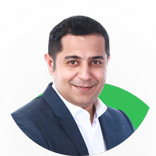The Illusion of Branding: Why THIS is the Real Game Changer


Amar Pandit
A respected entrepreneur with 25+ years of Experience, Amar Pandit is the Founder of several companies that are making a Happy difference in the lives of people. He is currently the Founder of Happyness Factory, a world-class online investment & goal-based financial planning platform through which he aims to help every Indian family save and invest wisely. He is very passionate about spreading financial literacy and is the author of 4 bestselling books (+ 2 more to release in 2020), 8 Sketch Books, Board Game and 700 + columns.
April 2, 2024 | 5 Minute Read
While I have written several posts on branding, I still felt a strong urge to write a few additional thoughts on this topic as this is such an important one. Let me begin this post with a question for you – How many people walk into your office door simply on hearing your name, or company name?
This answer is the same for all of us. Not Many! A Few or None! This is because there are no real brands in the wealth space. Even if you think there are brands (or consider yourself to have one), these brands are largely irrelevant because they do not drive volumes of potential ideal clients through the doors of these firms. For example, most of the biggest firms in the MFD space are not even known in their geographical markets or their hyper local markets. Compare this to a bank or a large FinTech player (which has spent hundreds and thousands of crores on branding and marketing) attracting thousands of prospects.
The truth in our industry is that the vast majority of prospects for most industry participants come from client referrals. And how many ideal clients does a firm really need? Not too many if you are a solo professional. I have discussed this before in my post on the Dunbar Number. The point is that it is often your personality as well as your connection (chemistry) and not your brand that persuades most of these prospects to work with you.
The painful reality is that we do not have a brand. Many are simply living under the illusion of having one.
The medical profession shares common ground with our industry when it comes to brand recognition and personal connection. For most general physicians and specialists at the early or middle stages of their careers, the personal brand is often overshadowed by the institution they are affiliated with. Hospitals and larger healthcare institutions, much like the banks or FinTech firms, are the brands that patients recognize and trust. They are the entities that invest significantly in branding, not the individual doctors who work for them. As a result, patients typically seek care from a hospital based on its brand, not specifically for the doctors who are there.
However, an interesting shift occurs as medical professionals advance in their careers and specialize further. The most senior and specialized doctors do begin to build their own personal brands, often through a combination of peer recognition, publications, speaking engagements, and patient testimonials. This is analogous to a small but significant segment of financial professionals who, through specialization, thought leadership, and a high degree of personalization in their services, succeed in creating a personal brand that can attract clients independently of any larger firm’s branding efforts.
The key thing then to recognize is that the first step in building a brand is to develop a capability to effectively diagnose and solve problems for a certain kind of ideal client. The words to understand here are Specialize, Specialize and Specialize. In short, build a Niche – become the best at solving problems for a certain type of ideal clients.
Niche marketing is effective marketing. Everything becomes easier the clearer it is that you are solving specific problems for a specific set of people. Leverage what you learn about solving these problems by turning it into content (thought leadership). The medium doesn’t matter; making it possible for people to find you does.
In our program, the Real Financial Professional (RFP), Carl Richards wrote something fascinating on this front.
The key to solving problems is to start small.
The key to having a massive impact is to find the smallest audience. This is the opposite of what you’ve learned. We are all taught to think big. Scale. Find the biggest market. I’ve read all those books and listened to those speakers at the conferences, too.
But BIG is a big lie. If we believe it, we will never change the world. Real Financial Professionals change the world by solving one problem at a time. That work compounds. If we’re busy thinking about scale and big, we might feel like we’re solving problems, we can point to big important things we’re thinking about doing. But that doesn’t necessarily translate to making an impact on anyone.
Real impact comes not from big and broad, but small and focused. The key is to find the smallest possible audience with a shared, meaningful problem that we are interested in and able to solve. Learn to do that, and word will spread.
You know that money is a means to an end. Mutual Fund investments are too a means to an end, and this end is all about what the clients want to use their money for. What do your clients want to accomplish? What is the life they imagine living with their money? Your job first and foremost is to diagnose this

Always start at Diagnosis.
Are you doing this currently or do you directly start with prescriptions?
As I have mentioned before, the first meeting is the best time to diagnose a prospective client thoroughly. And it is only after you have diagnosed your client thoroughly, should you start formulating a prescription plan. But even before you start thinking of a plan, the key thing to understand is if you are indeed the right financial professional for this client.
The paradigm of building a brand, especially in sectors like ours and healthcare, is rooted deeply in specialization and the development of a unique proposition that caters to the needs of a specific clientele. The journey of branding begins with an introspective question: what unique problems can you solve for your ideal clients that others cannot? It’s this specialized skill set, coupled with a profound understanding of your clients’ needs, that sets the foundation for a personal brand.
In the digital age, this means not just being the best in your vicinity but being the best for the clients you choose to serve, wherever they might be. It’s about creating content that resonates with your niche, and about communicating your unique expertise (examining specific problems your audience faces) through the media that your potential prospects regularly read.
Consider the financial professional who becomes synonymous with retirement planning for certain types of retirees of a large organization or someone who specializes in ESOP for Corporate executives.
Your brands are not just built on your titles but on the narratives you craft, the problems you solve, and the consistent value you deliver. It’s this narrative that you must build and weave into every interaction, every piece of content, and every service you offer.
Thus, as you specialize and narrow your focus, your brand begins to crystallize, becoming more potent and recognizable. You don’t just become any financial professional; you transform into a pivotal resource for a distinct group of clients who seek precisely what you offer. Your brand, therefore, is not just your name or logo, but the complete experience that your clients have come to expect from you – a fusion of expertise, trust, and personalized care that cannot be easily replicated.
In conclusion, to build a personal brand in a world where institutions dominate the branding landscape, focus on cultivating deep expertise in a niche market. Align this expertise with an authentic presence both online and offline, ensuring that your brand is not just seen but felt, not just heard but understood. That is where the true power of personal branding lies – in the ability to resonate on a personal level with those you serve, creating not just clients, but champions of your brand.
Similar Post
Marketing
Who Are You in Your Client's Lives?
In our industry/profession, your brand is far more than just your logo, your name, or even the name of your company. These elements are certainly important, but they merely serve a ....
Read More
10 September, 2024 | 5 Minute Read
Marketing
The Richest Man In...
I intentionally left the headline incomplete as I wanted you to guess the missing word(s)...
What do you think completes the headline?
I got many blank stares and some unique respo ....
Read More
14 November, 2023 | 7 Minute Read
Marketing
The Next Step
I received a fantastic response to my last Friday’s Nano “This is Key for you to Thrive in the Next 3,10 and 30 years”. There were 2 common responses given by many of you and ....
Read More
22 September, 2020 | 6 Minute Read
Marketing
Your Best Marketing
“Wow, I’ve never seen this before. This is what I’ve been looking for.”
That’s what Mr. Murthy said in our first meeting.
And Mr. Sharma.
And Mrs. Iyer.
And so many other ....
Read More
15 April, 2025 | 5 Minute Read
Marketing
This is your Best Marketing Strategy
Last week, I wrote about the Power of Compounding and how it is the most important wonder that every investor should see in her financial life. Sadly, it is one thing to understand ....
Read More
8 September, 2020 | 5 Minute Read
Marketing
The 2 Biggest Issues with your Key Marketing Tactic
Ask any wealth management/financial planning firm globally about their most important source of growth and you are likely to get only 1 answer – Referrals. Yes, I know there are ....
Read More
14 July, 2020 | 7 Minute Read



- 0
- 0



0 Comments